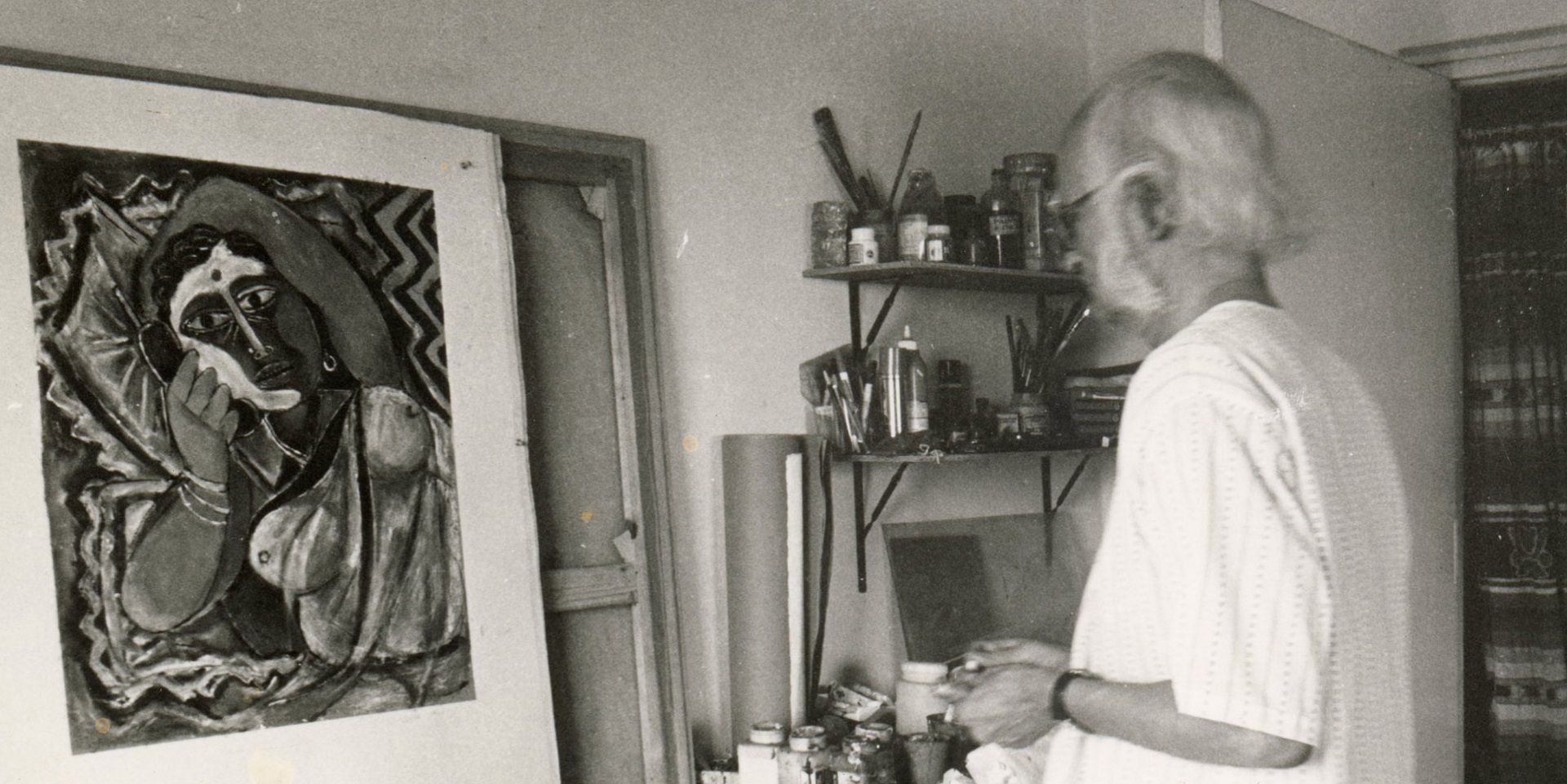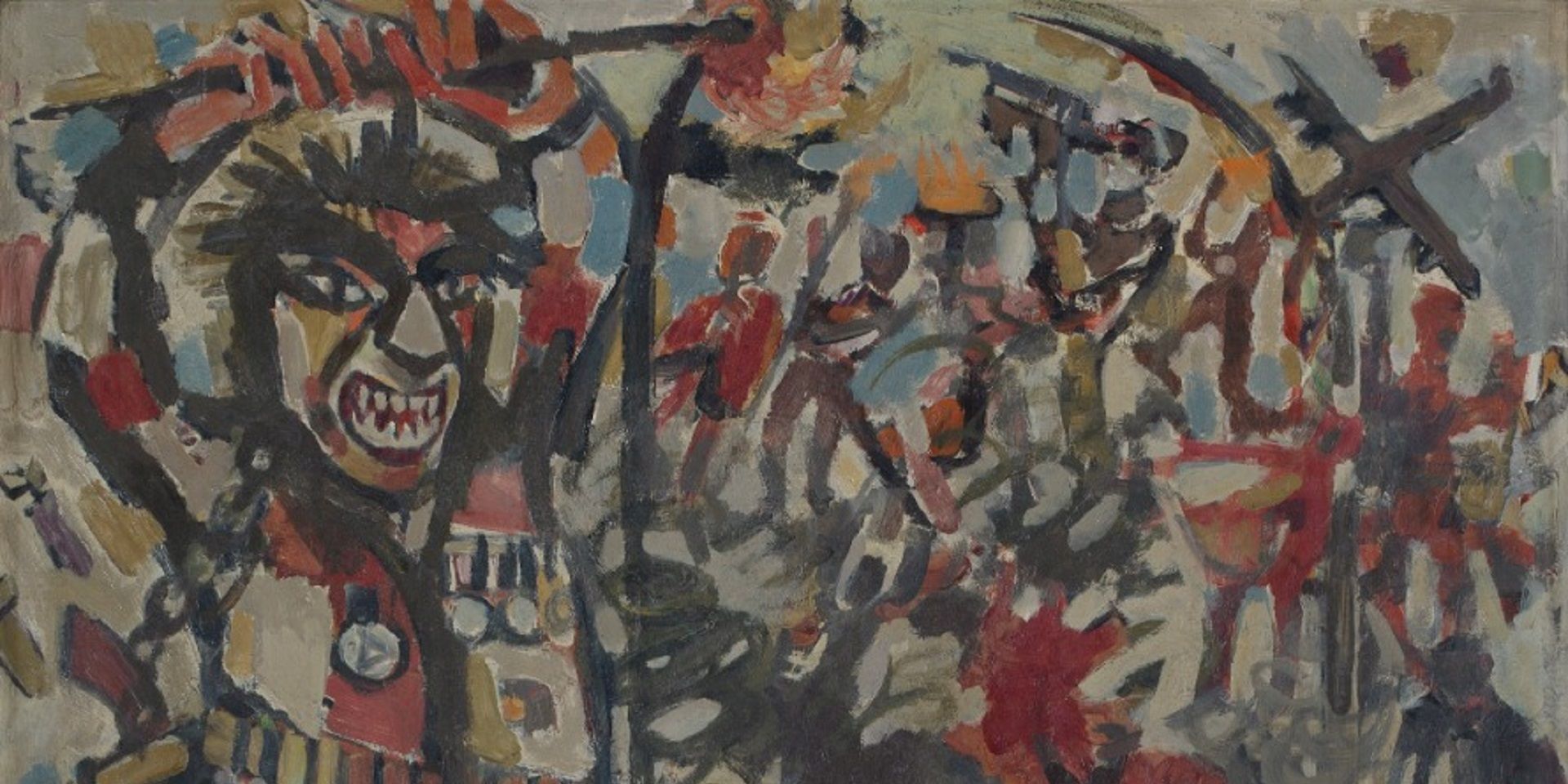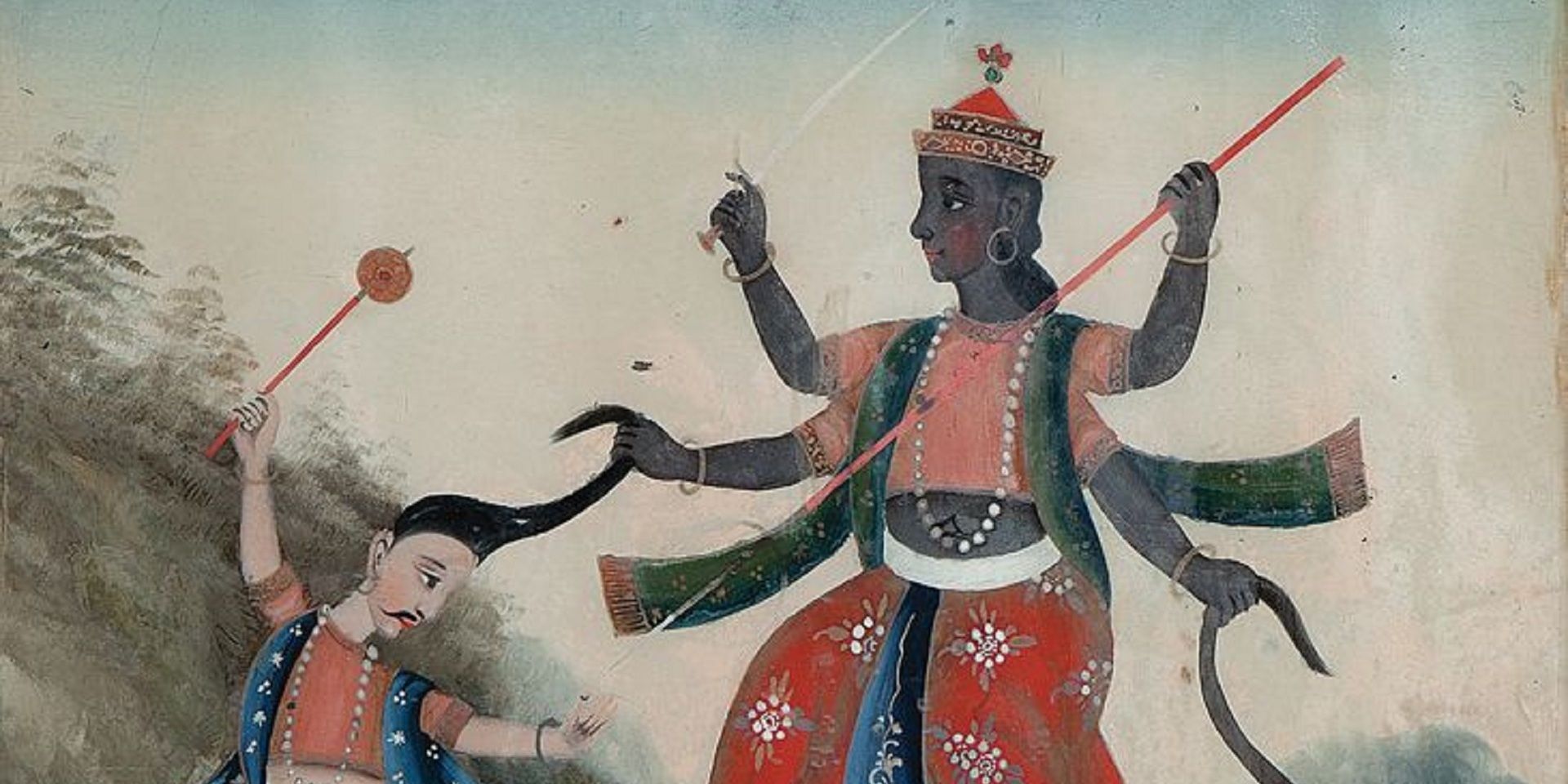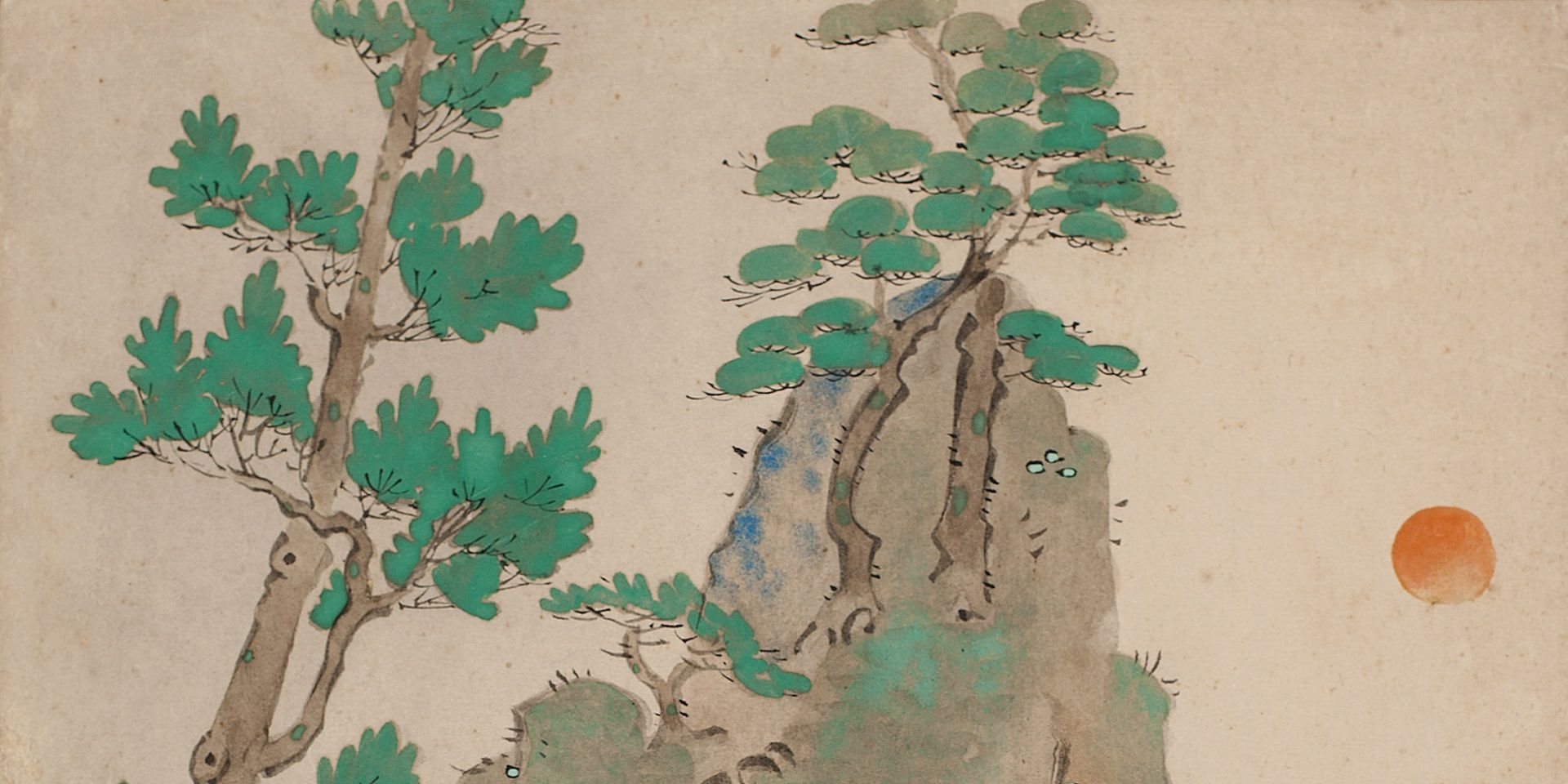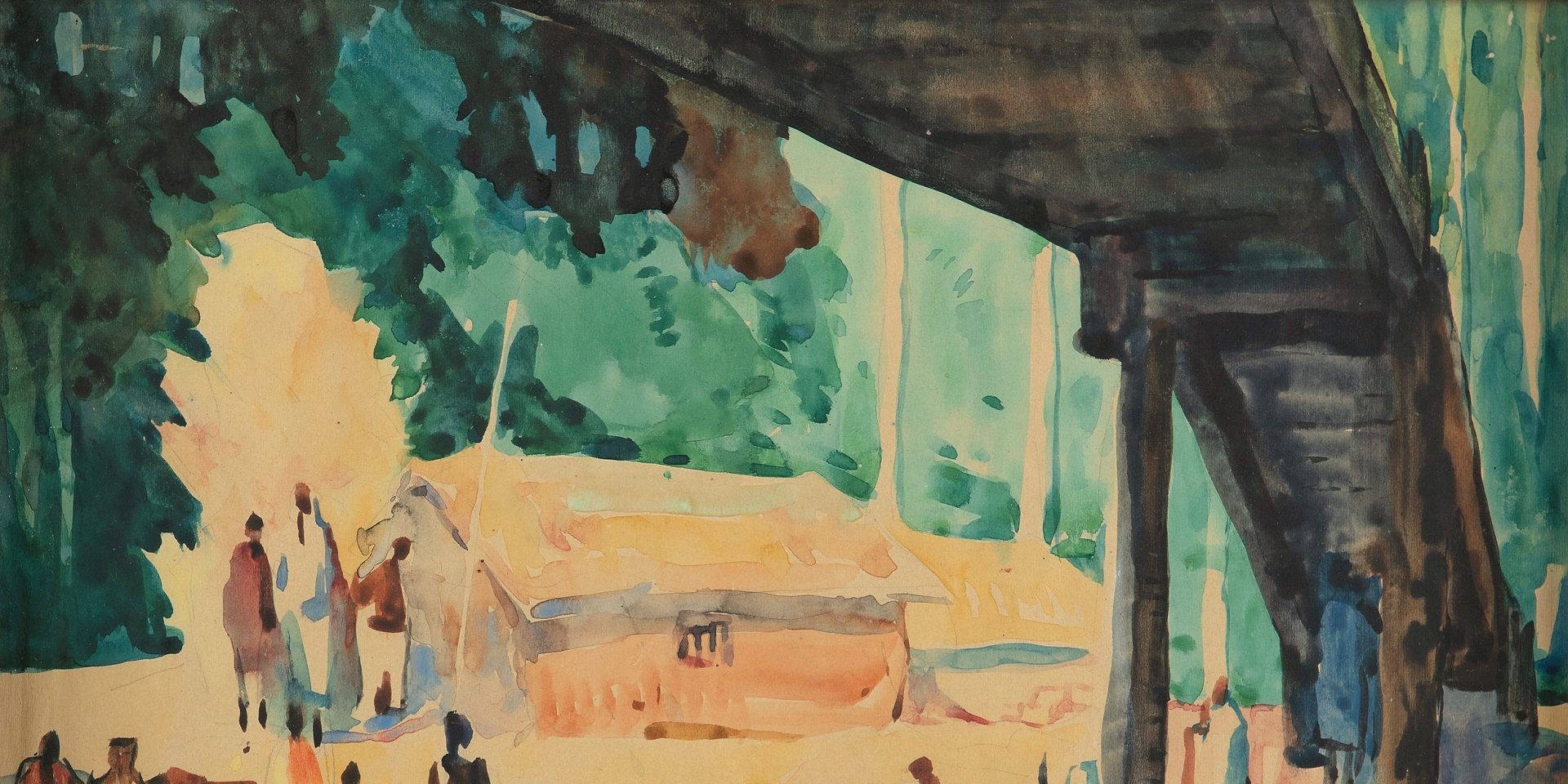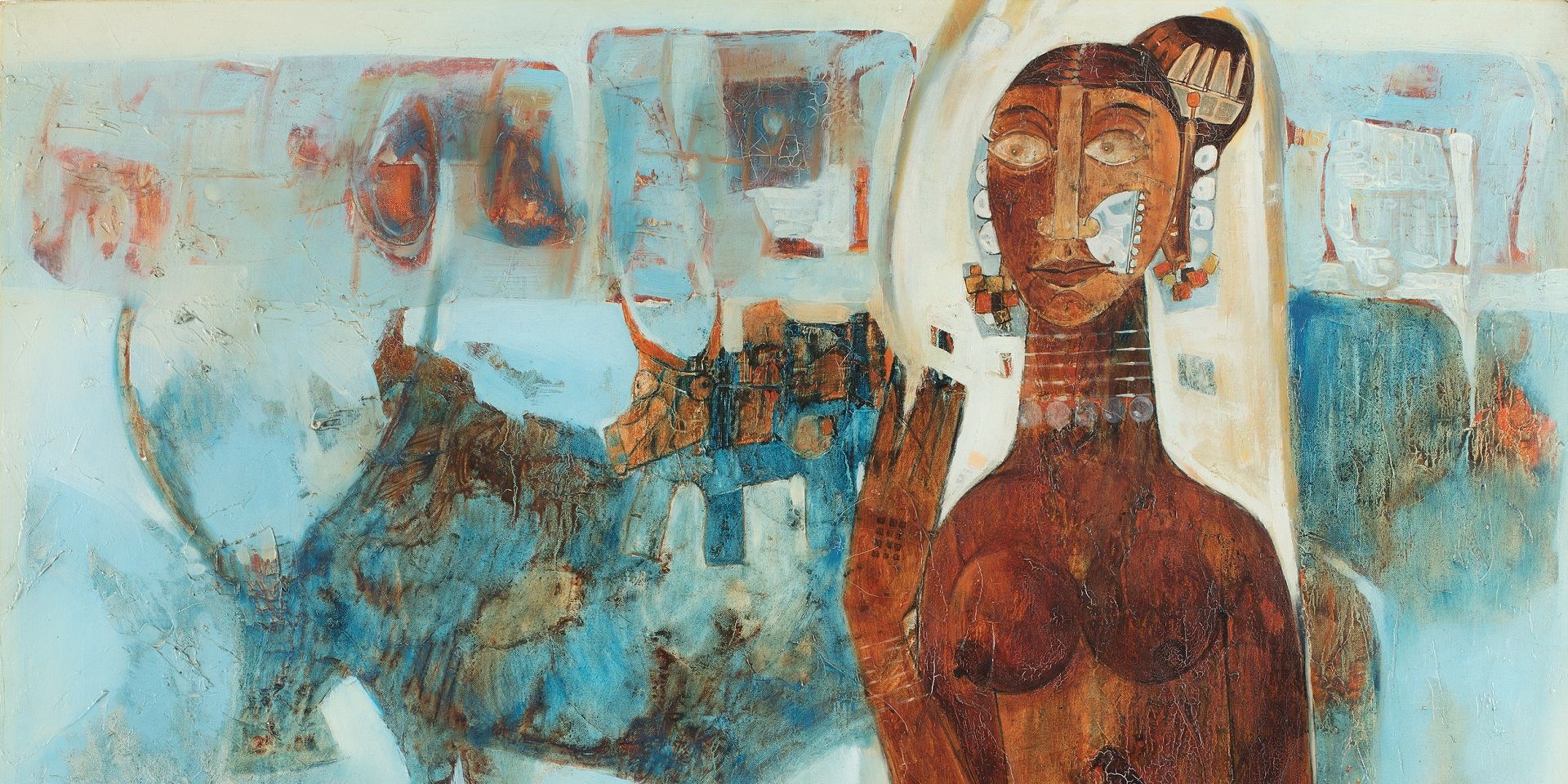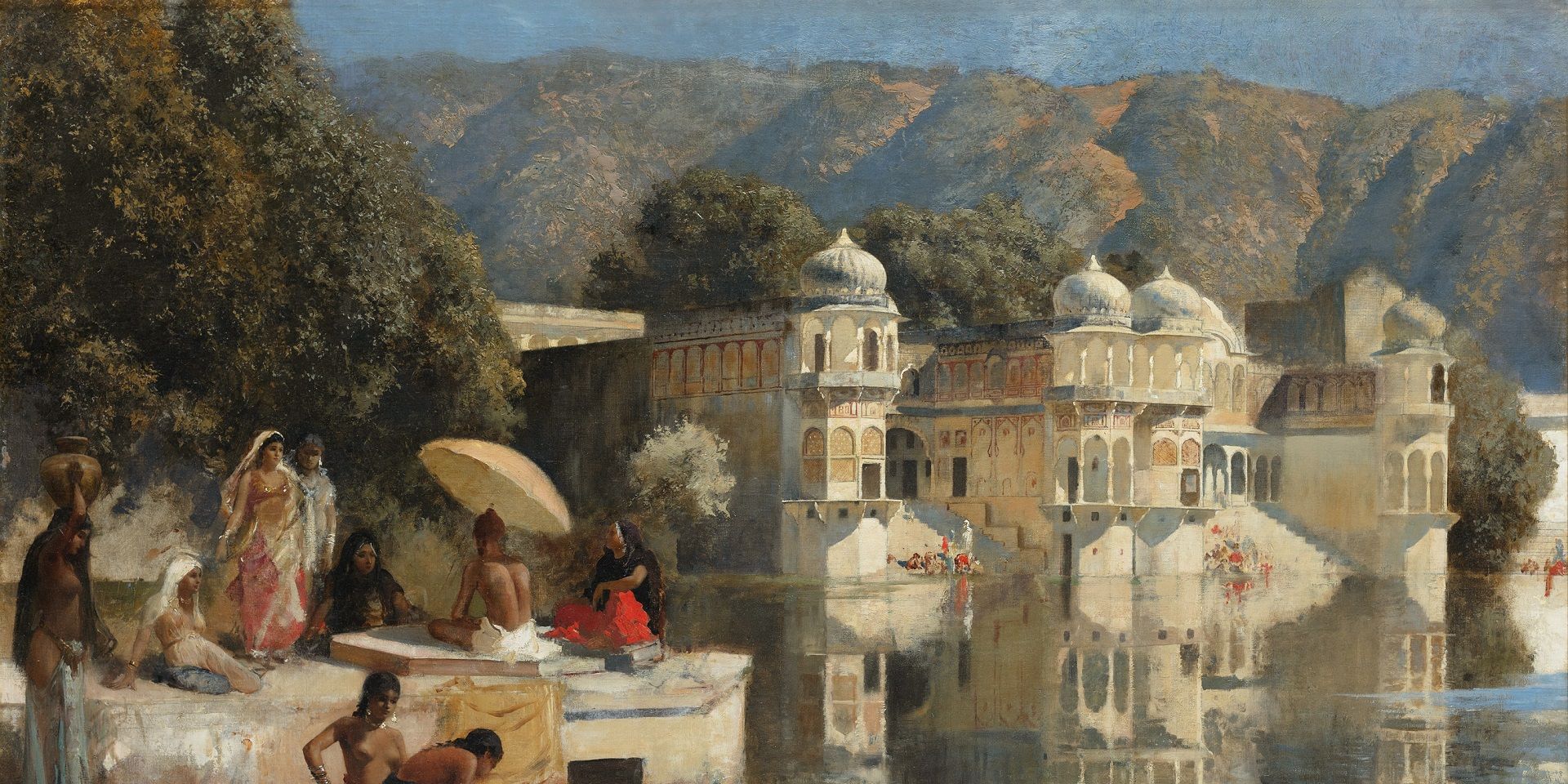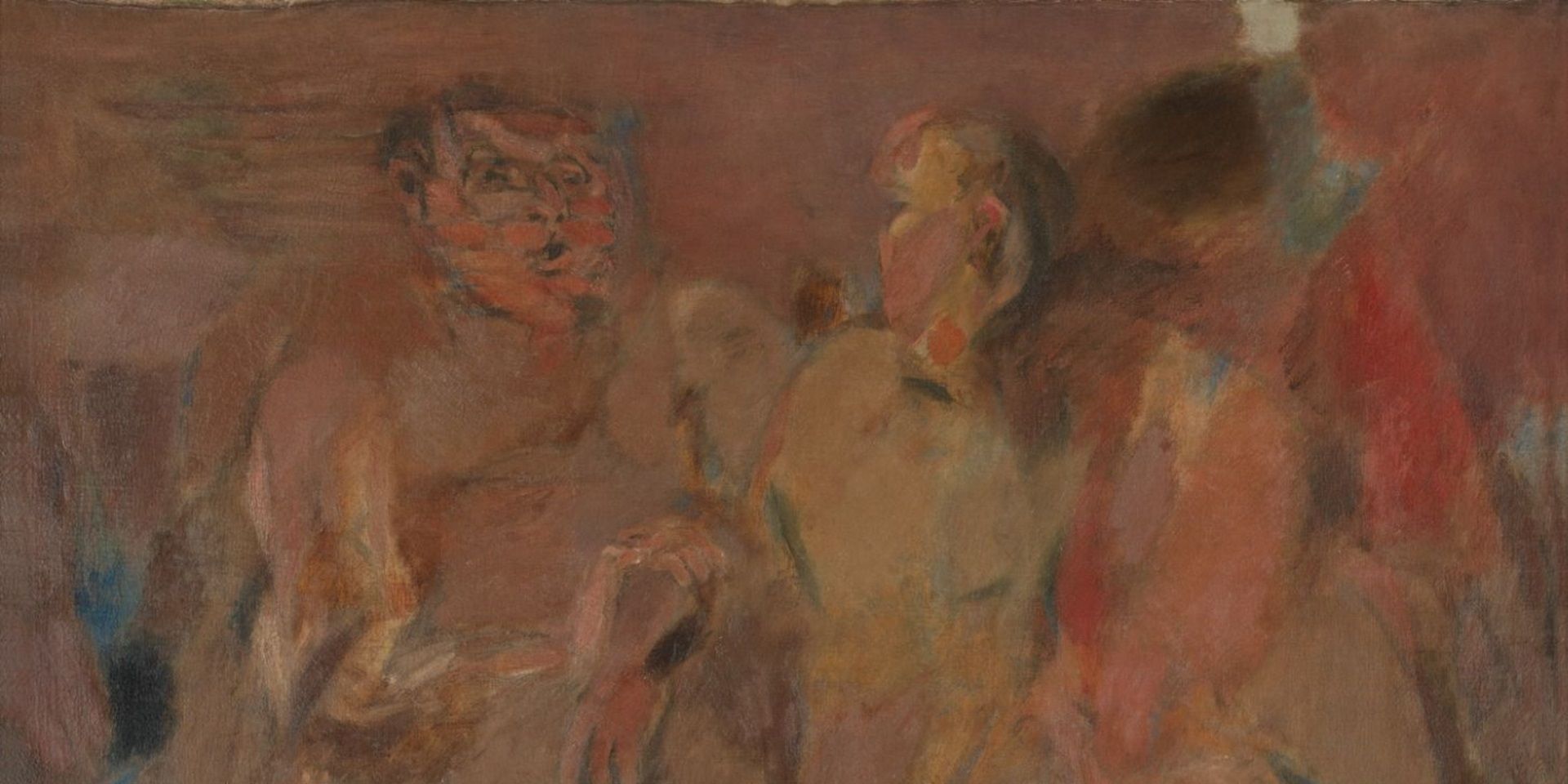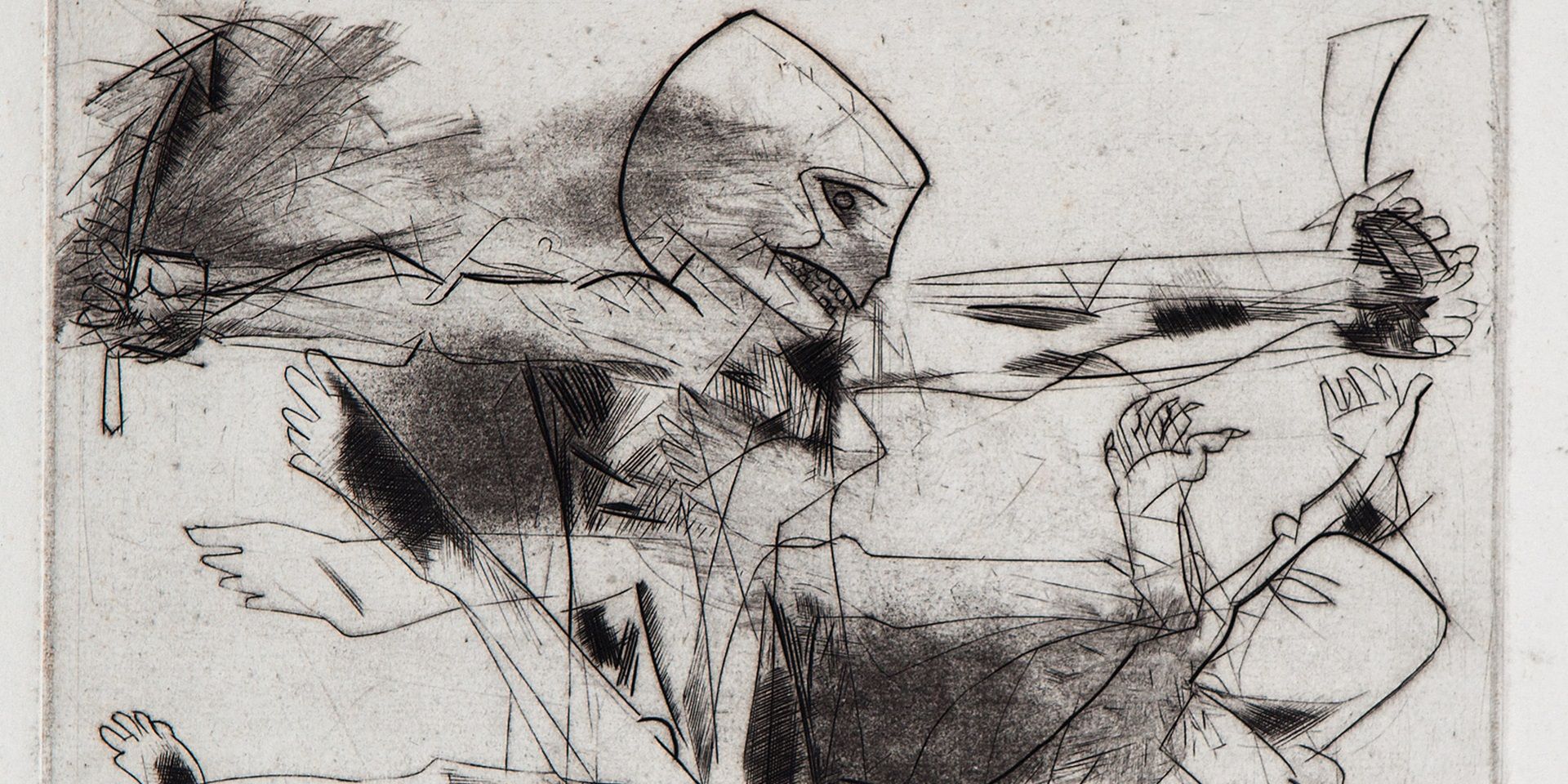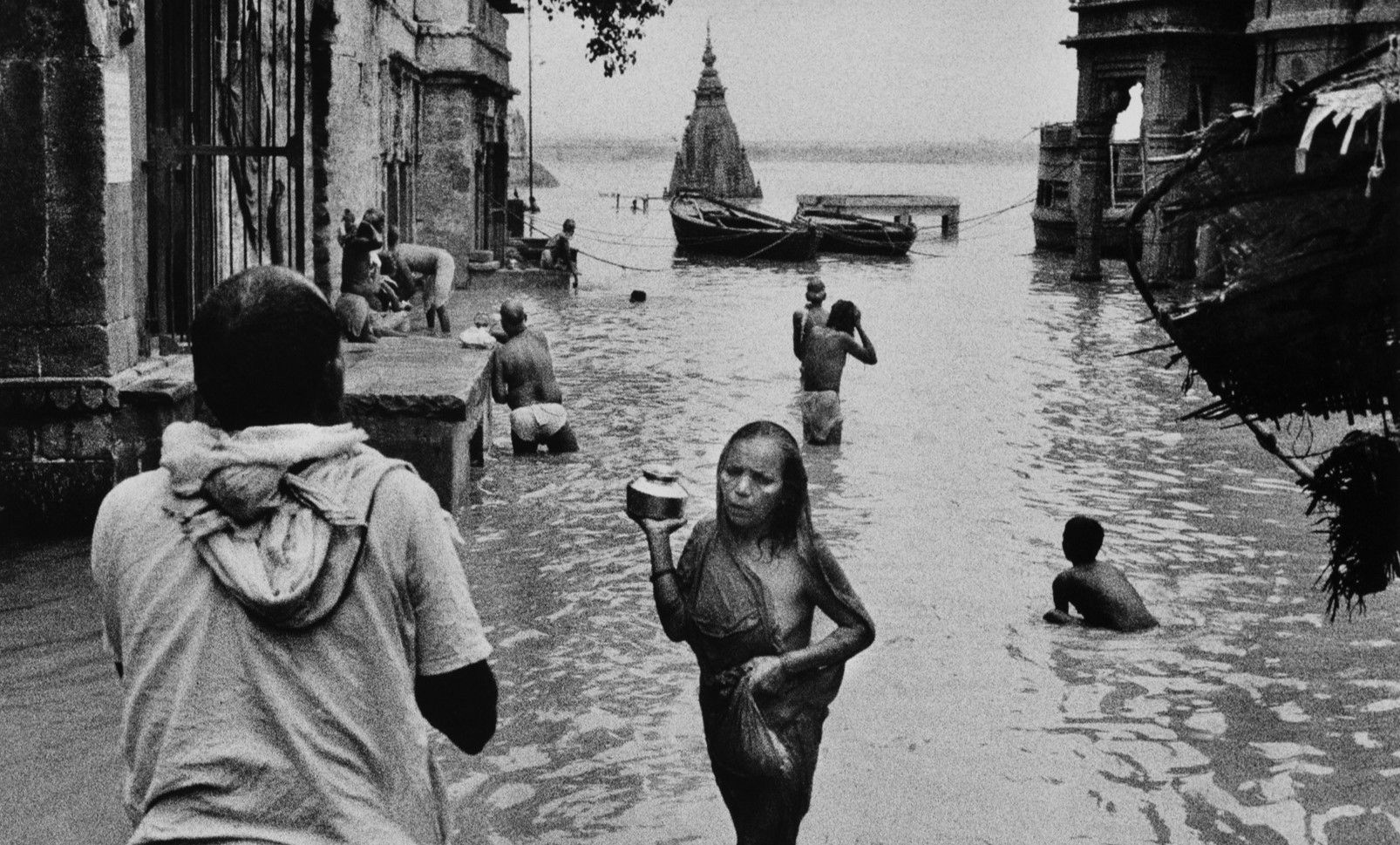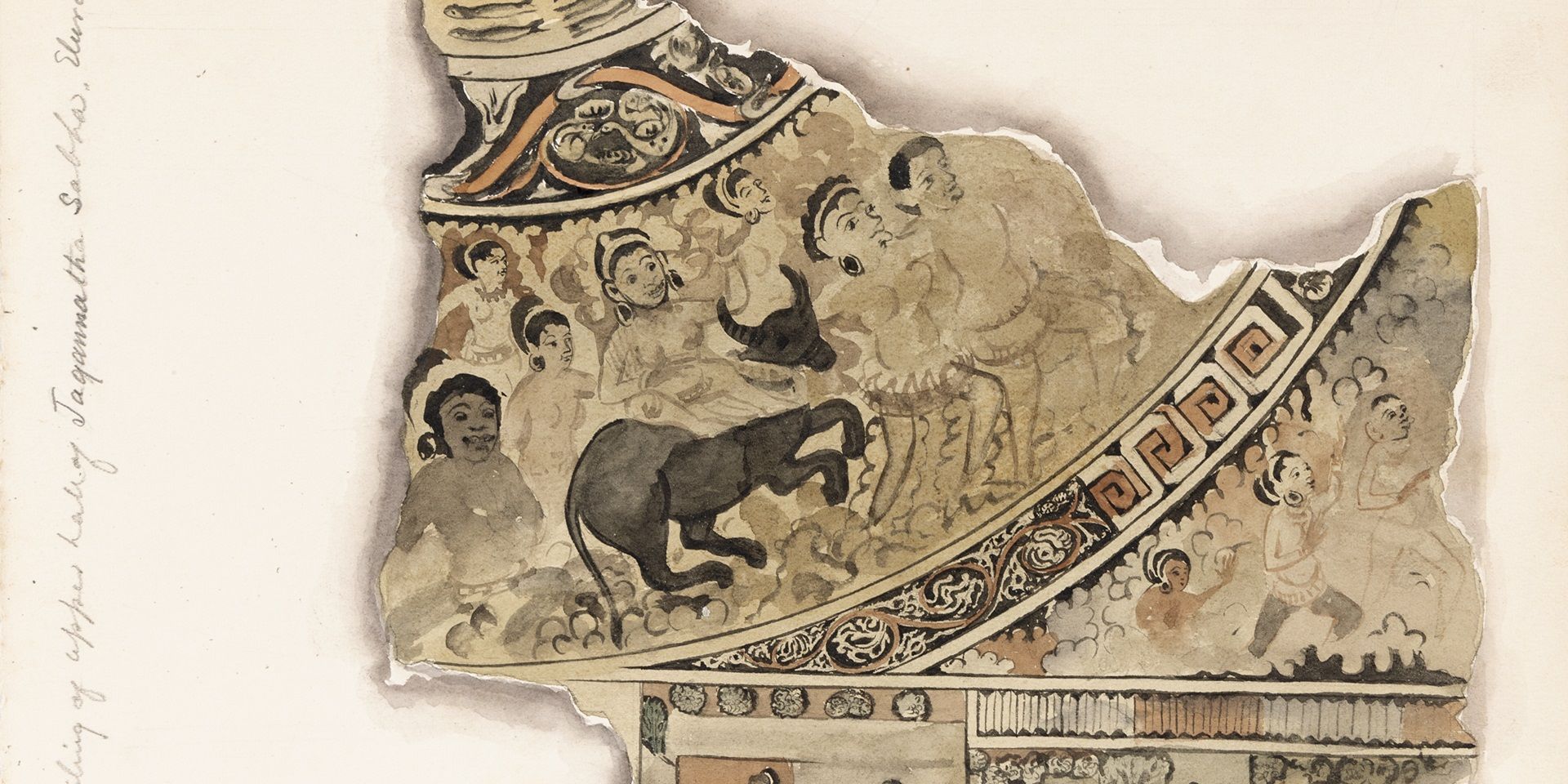A Place of Forever Return: Roobina Karode on Laxman Pai
A Place of Forever Return: Roobina Karode on Laxman Pai
A Place of Forever Return: Roobina Karode on Laxman Pai
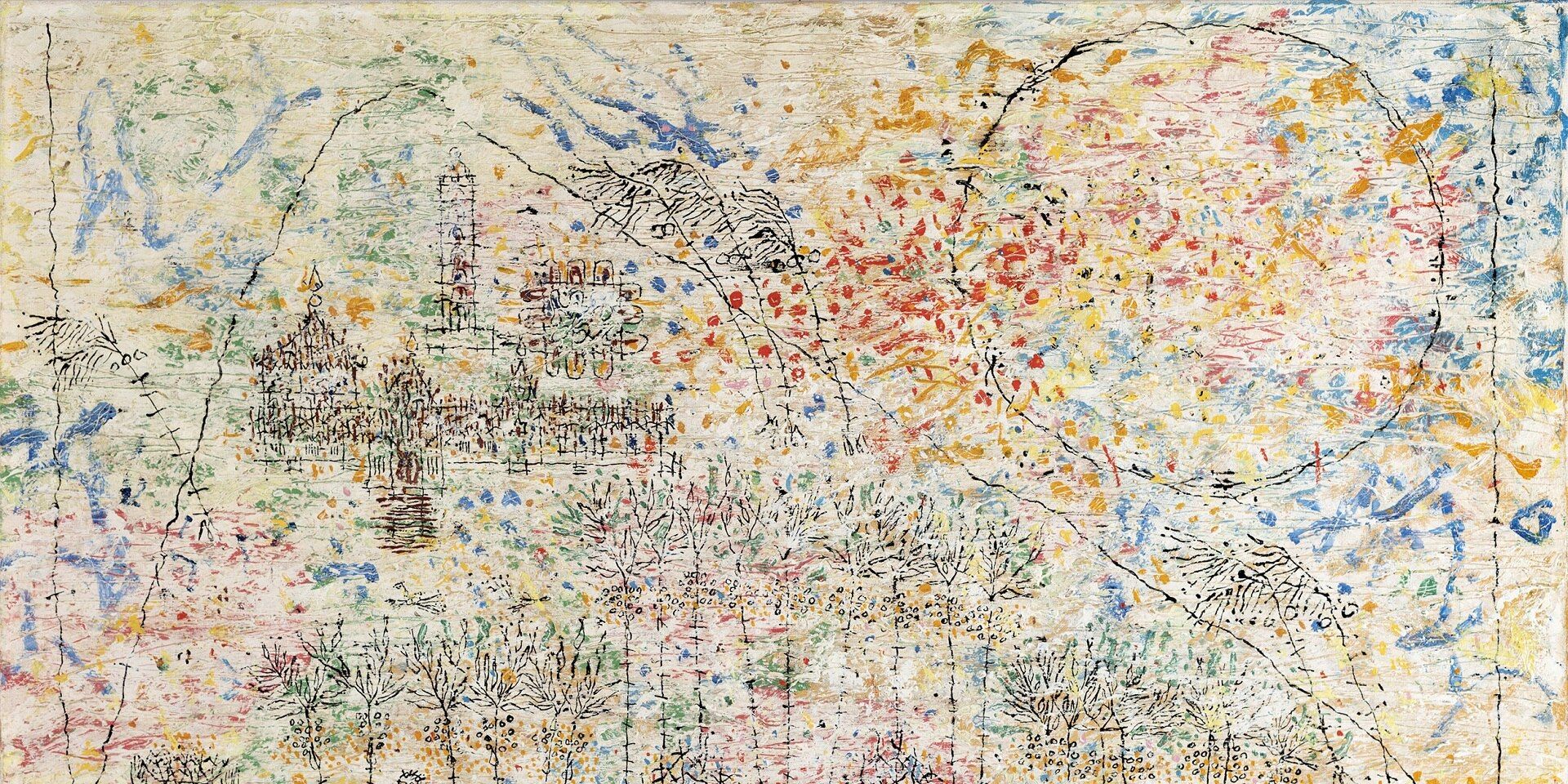
Laxman Pai, Le Soleil (detail), 1957, Oil on canvas, 28.0 x 38.2 in. Collection: DAG
How did memories of a home inspire the artist Laxman Pai during his stay in Paris? Roobina Karode explores the relationship between three subjects that were recalibrated by this work of art: Paris, Goa and Pai’s vision for an Indian modern art.
Just as the Goan sun never really set for Laxman Pai, in his art too, Goa appears both as memory and muse. Titled Le Soliel or ‘The Sun’, the painting is a symphony of joy, a spontaneous and playful juxtaposition between the spirited abandon of colours and delicacy of rhythmic lines, a fitting exemplar of the works he painted during his ten long years in Paris. An inevitable lure, Paris in the early 1960s was the perfect site for possible vanguard artistic practices—and for Indian artists, perhaps a promise for creative freedom. For Pai, it was a first-time experience of being away from home. Yearning for his native land and people, Pai obsessively painted its temples and churches, the beaches, the native tribes, fishermen, and the paddy fields. The spiritedness of Goan daily life and its lazy afternoons and leisure time was captured by the artist with the spontaneity of free brushwork and emotional scaling of subjects.
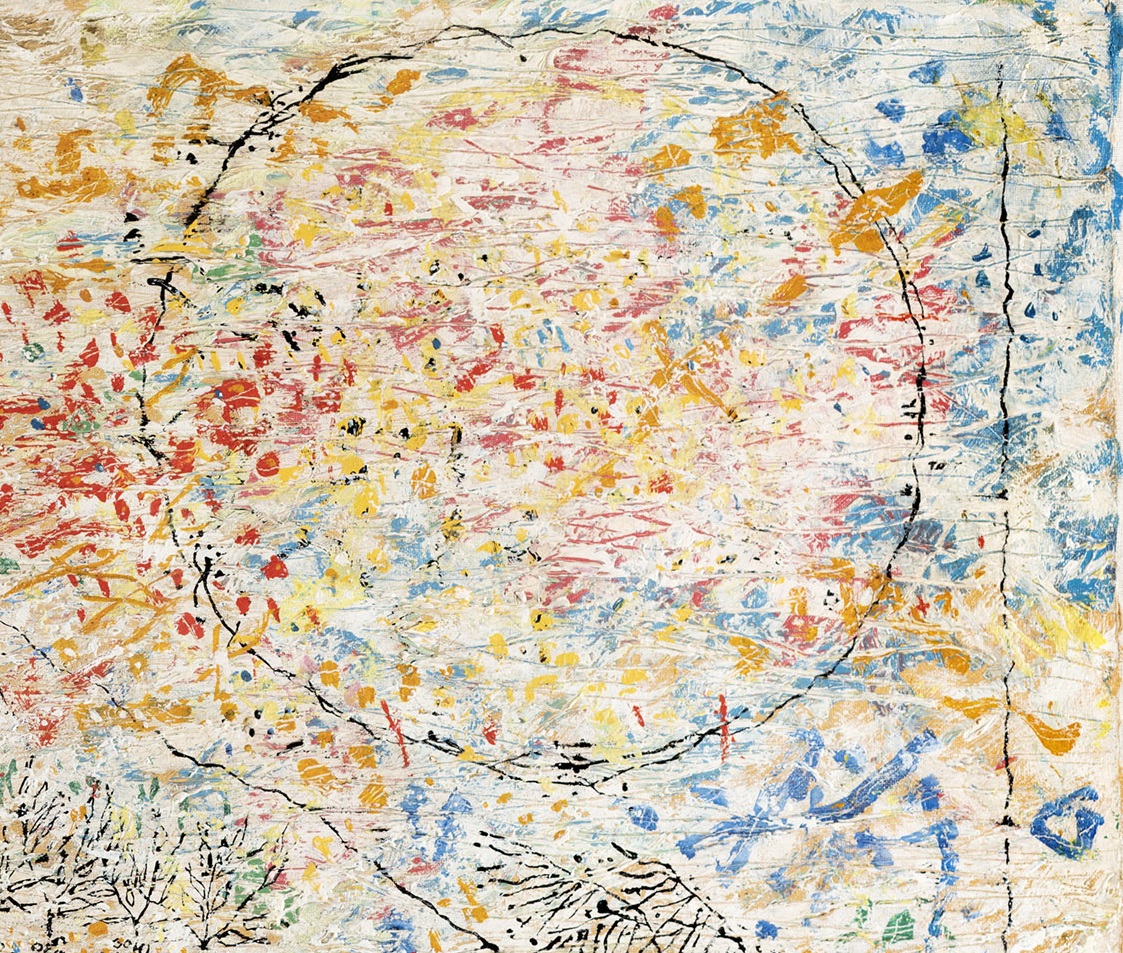
Laxman Pai, Le Soleil (detail), 1957, Oil on canvas, 28.0 x 38.2 in. Collection: DAG
Coinciding with one of Pai’s most artistically productive and significant phases, the Paris years (1951-61) were also his earliest. Quite like other Bombay (now Mumbai) artists Akbar Padamsee and Sayed Haider Raza, Pai decided to board a ship to Paris with the sculptor Sadanand Bakre, breaking away from the city’s artistic and academically stifling atmosphere. At the École Nationale Superieure de Beaux-Arts where he was enrolled as a free student, Pai began experimenting with the mechanics of painting. He sought to sample a variety of styles and techniques and expand his understanding of mural-making and graphics, and, in particular, etchings and lithography.
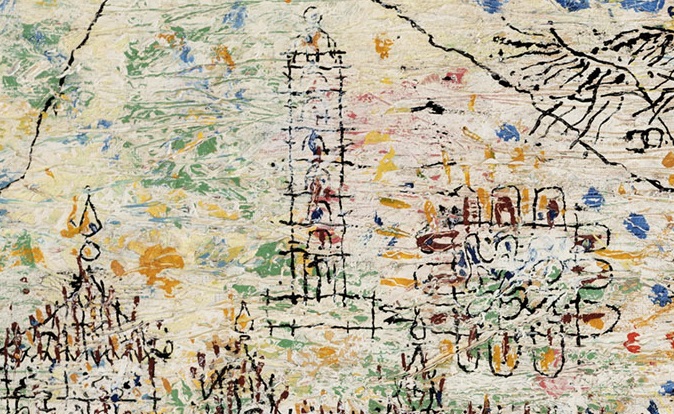
Laxman Pai, Le Soleil (detail), 1957, Oil on canvas, 28.0 x 38.2 in. Collection: DAG
During this phase, Pai was obsessed by the function and beauty of line, often a schematic and symbolic line that would represent his world. In Paris, he was drawn to the vibrant lines in Swiss-born German artist Paul Klee’s works. Pai attempted to invent different painterly and visual effects through his indulgent play with line and colour. This got further refined at Rosenthal Porcelain in West Germany from where he received a design commission in the mid-1950s. Here, the sheer act of placing colour and design on delicate white porcelain vases would guide the artist to hone his skills in the application of dots, lines, and tones while retaining the whiteness of the surface. Although this painting radiates with Pai’s effulgence and pure joy unleashed by the processual potential of the work, the delicate lines and placement of dots also resonate with his Rosenthal porcelains.
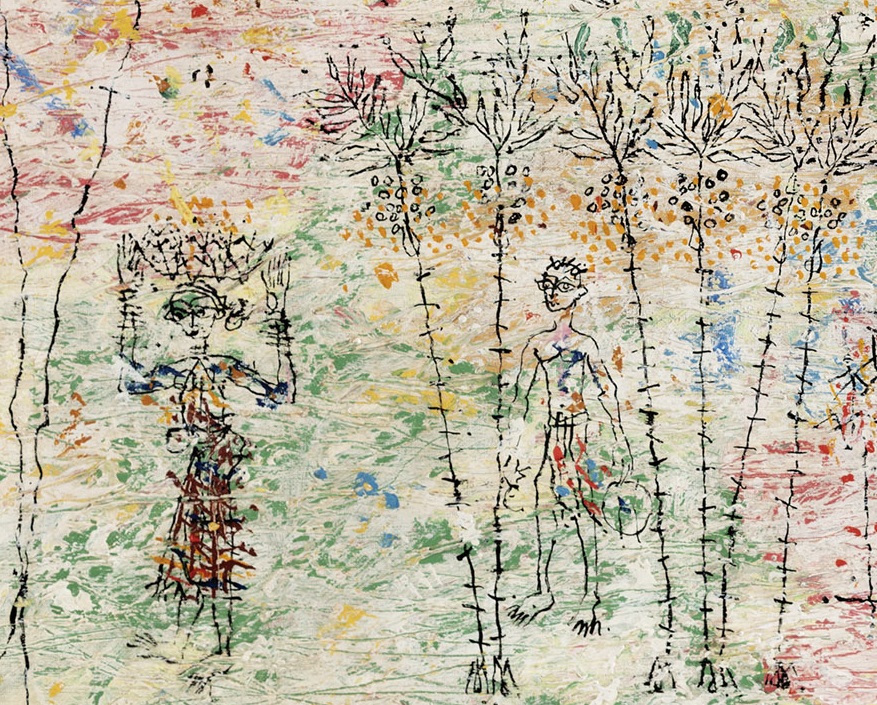
Laxman Pai, Le Soleil (detail), 1957, Oil on canvas, 28.0 x 38.2 in. Collection: DAG
Pai was drawn to exploring and experimenting with many possible modes of formal expressiveness via gestural brushwork and playful impasto, where even the most undisciplined and instinctive doodles became aesthetic layers of the art work. For instance, he mastered the water dribbles and melting lines in pen and ink. The spontaneity of his paintings and his broad structural organisation made for a simplified yet intricate pictorial image which is more of an ‘implication rather than description’. There is almost an obsessive urge to flood the surface with an unrelenting fervour and yearning for reclaiming the land and the local people through a symbolic mapping. Here, the artist’s memory is indeed an abstraction—a reconstruction of an idea or thought that is not simply replicated or even recreated, but an image that is intensified through the ‘act of remembering’.
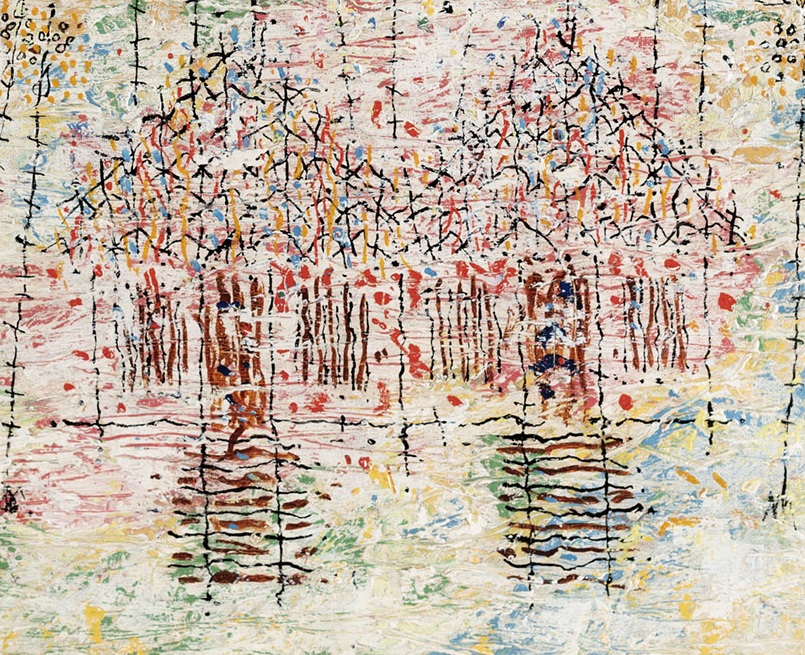
Laxman Pai, Le Soleil (detail), 1957, Oil on canvas, 28.0 x 38.2 in. Collection: DAG
The city of Paris opened its arms to Pai and he frequently exhibited in many major galleries there. This visibility of the young migrant artist in effect inaugurated his legacy of one-man shows across the globe, from New York and Sao Paulo to London and Stuttgart. Accordingly, he voraciously imbibed every drop of artistic and intellectual fervour the cities had to offer while the feeling of distance and estrangement overwhelmed Pai’s being and nurtured nostalgia for Goa, his native land. All his peripatetic excursions were moored to the coastal state’s sandy beaches and bright sun, sparkling waves and paddy fields, a place of forever return.
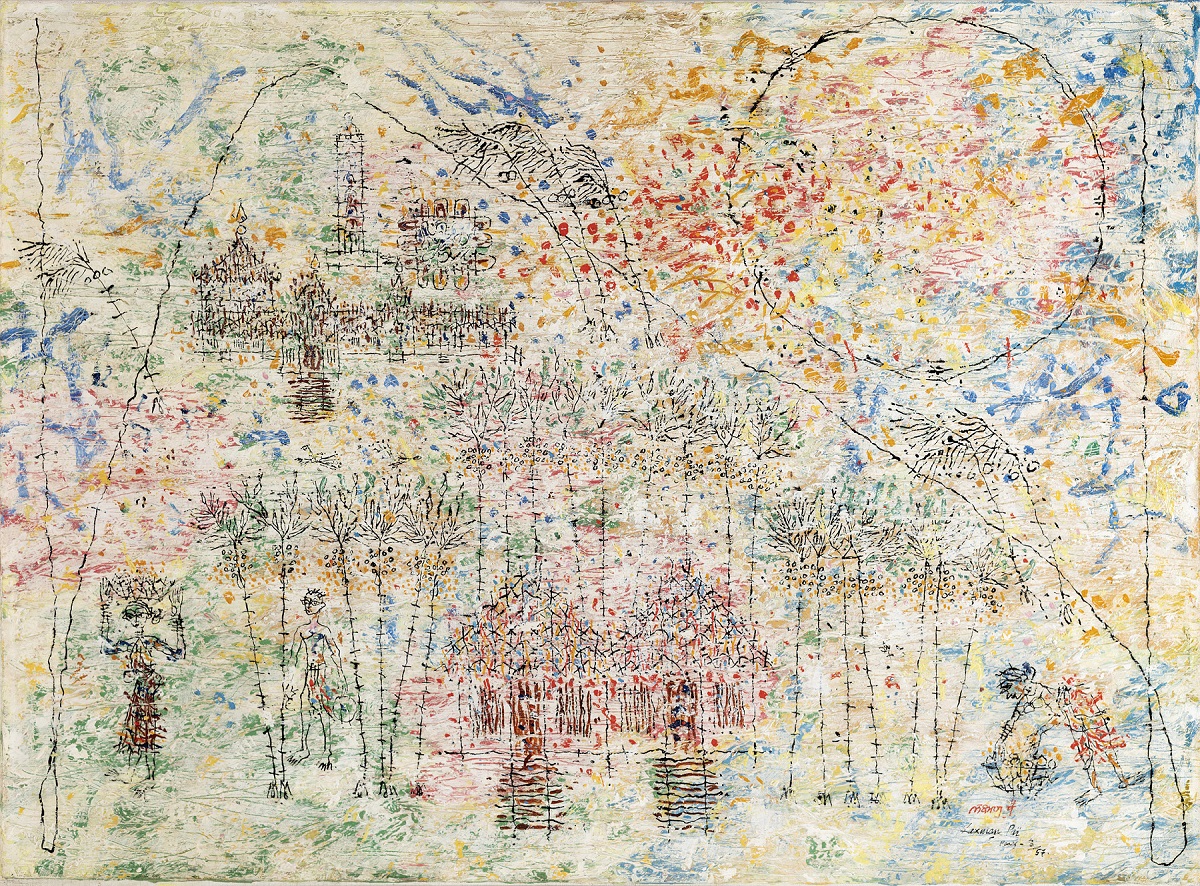
Laxman Pai, Le Soleil, 1957, Oil on canvas, 28.0 x 38.2 in. Collection: DAG
related articles

Essays on Art
Before the Chaos of Destruction: Jeram Patel's Iconic Works
Roobina Karode
February 01, 2023

Essays on Art
To Hell with the State: Caricature in early (Post)colony
Sayandeb Chowdhury
June 01, 2023
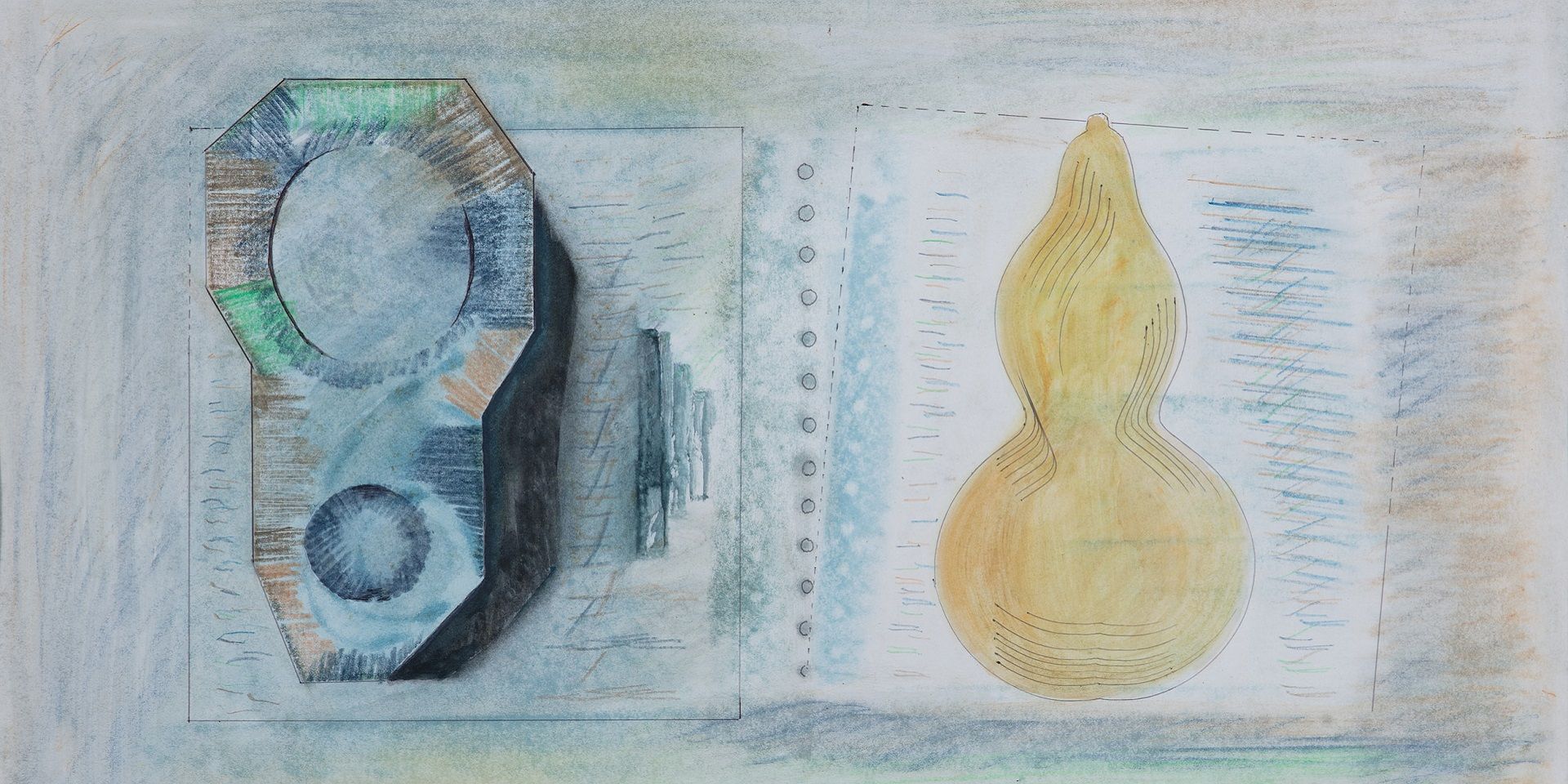
Essays on Art
Searching for the ‘Inner Form’ in Prabhakar Barwe’s Blank Canvas
Bhakti S. Hattarki
August 01, 2023
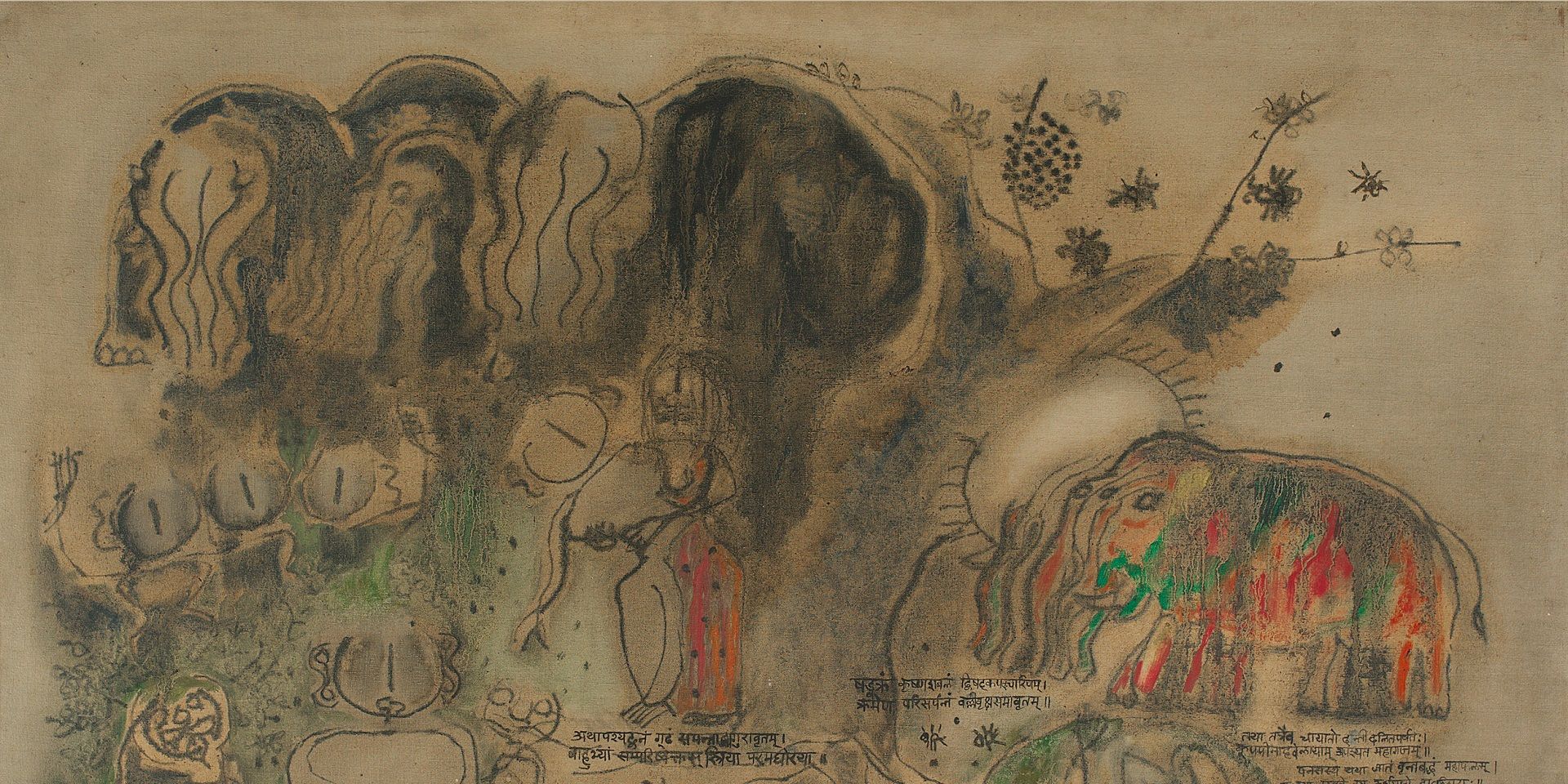
Archival Journeys
'The “livingness” of the past’: M. Reddeppa Naidu's mythologies
Shaon Basu
July 01, 2024
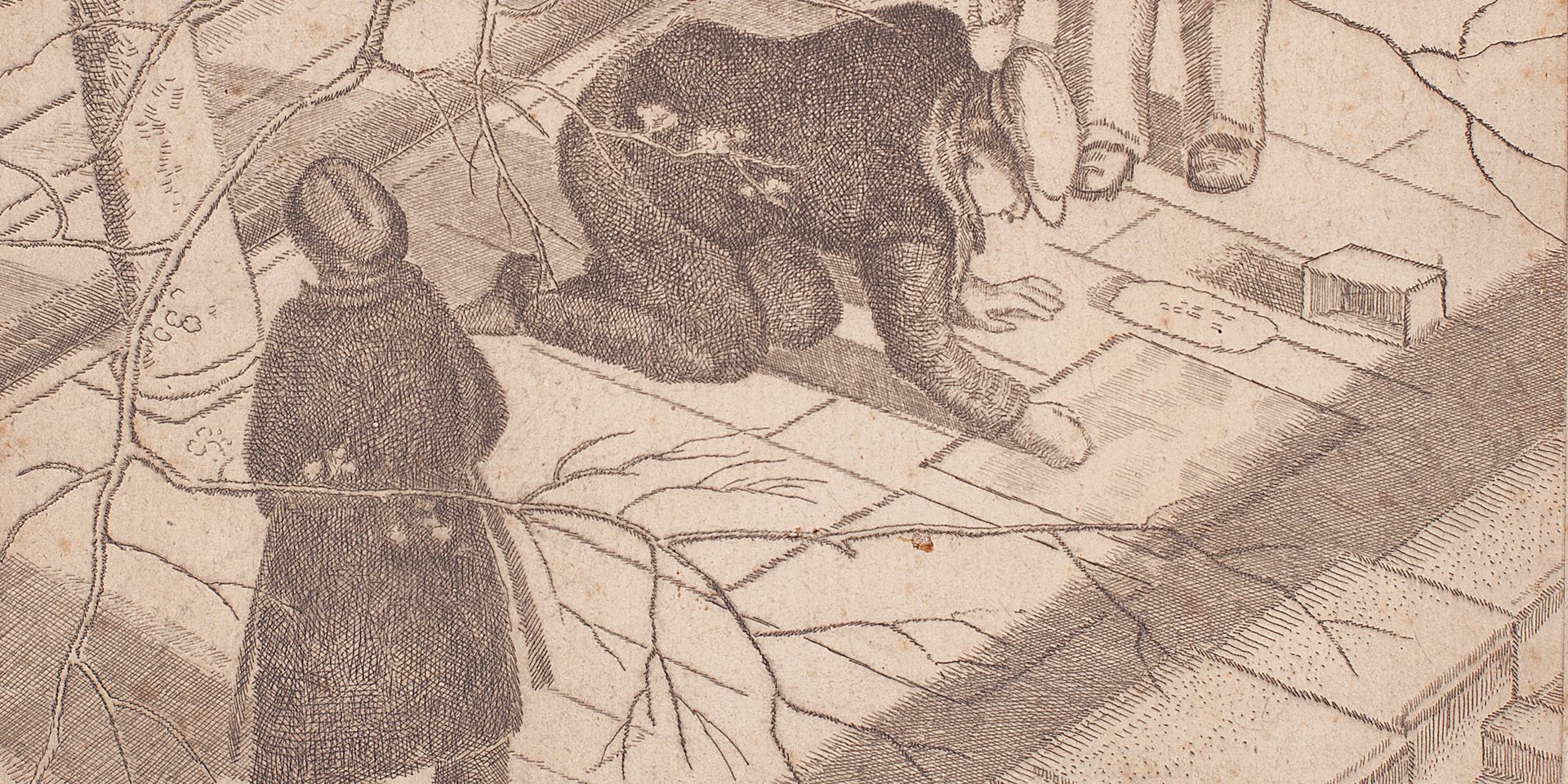
Travelling with Artists
Europe Before the War: Travelling with Ramendranath Chakravorty
Shreeja Sen
July 01, 2024
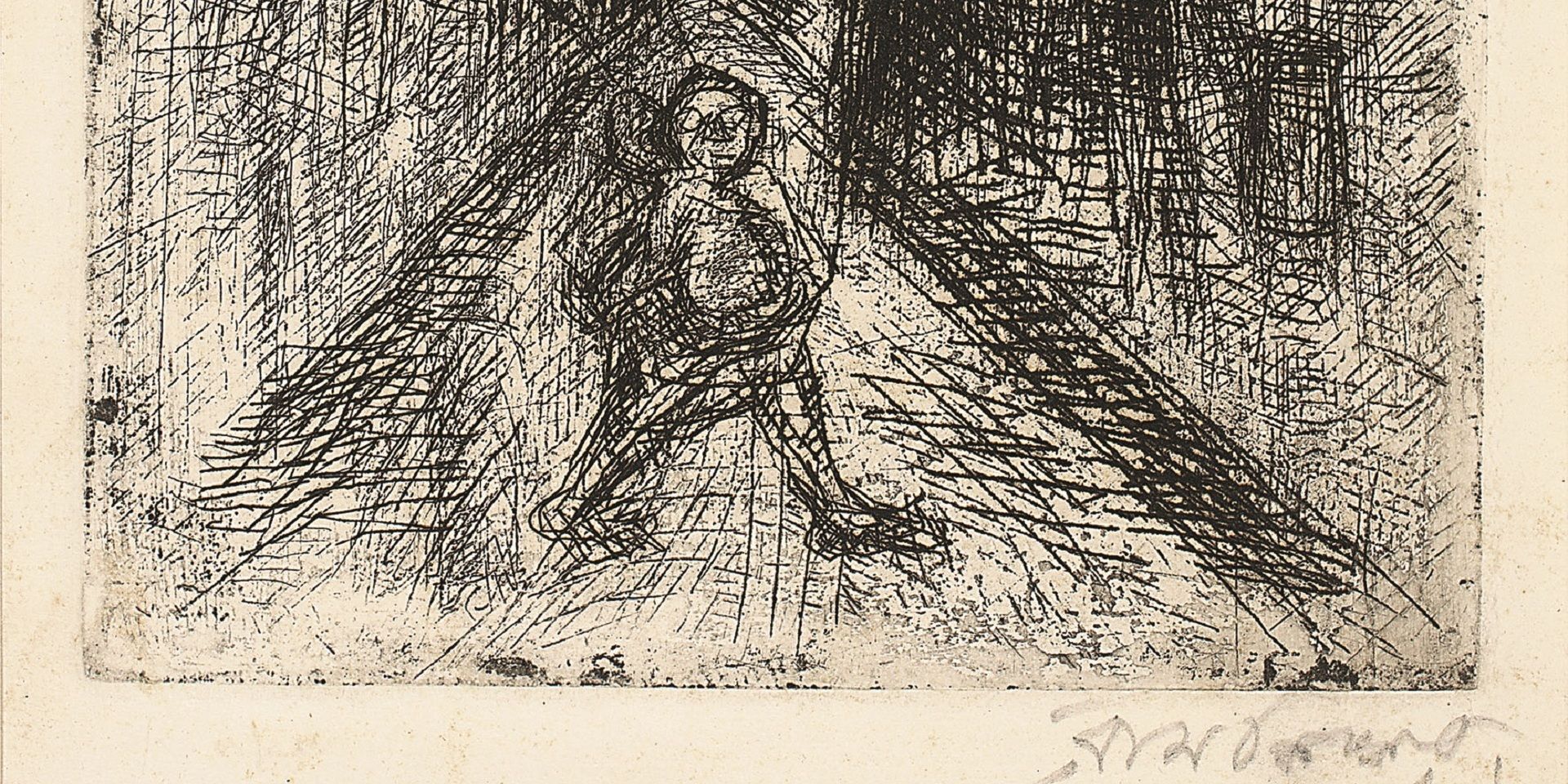
Essays on Art
On 'Not Looking Back': Samaresh Basu meets Ramkinkar Baij
Debotri Ghosh
August 01, 2024
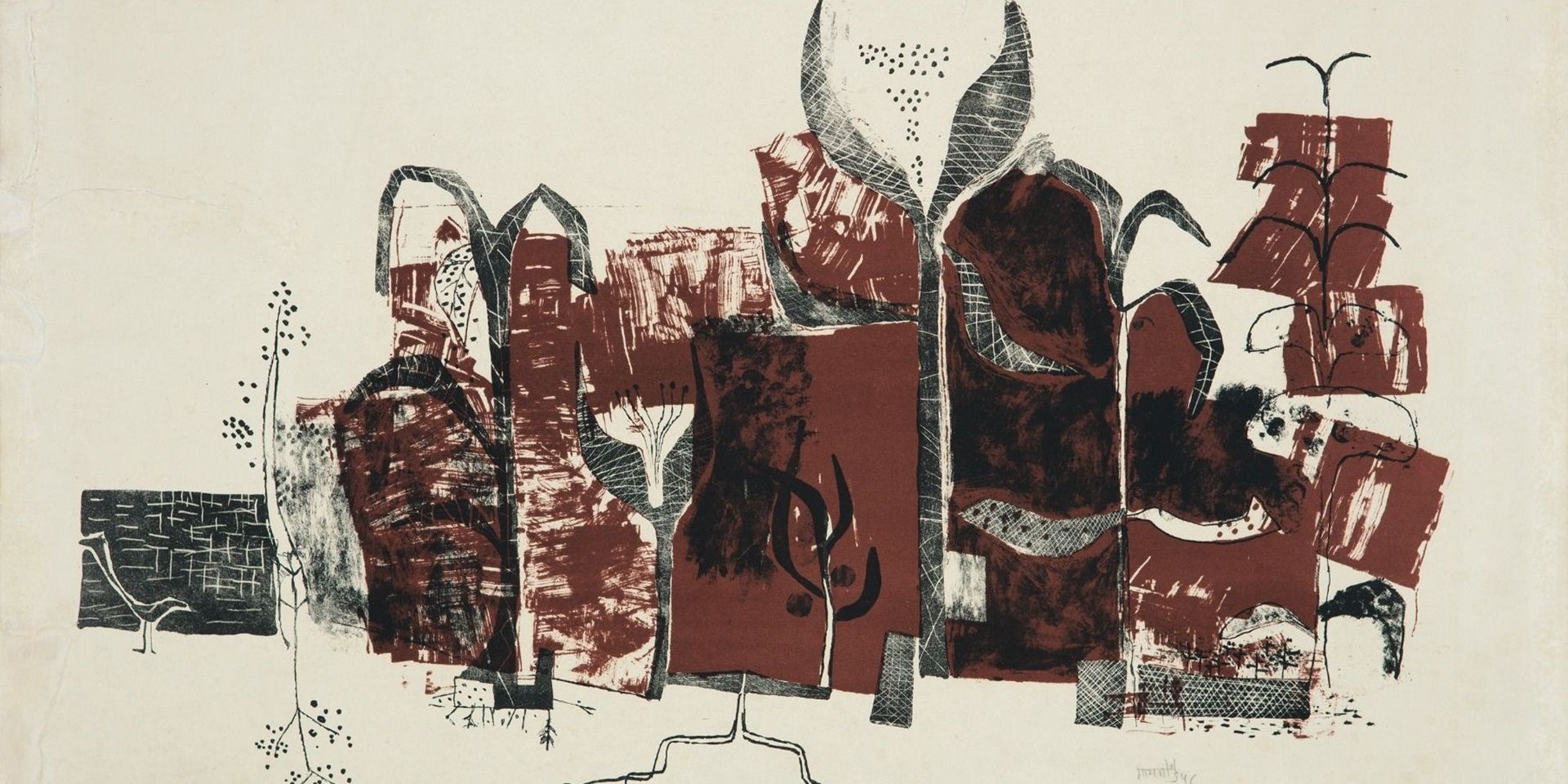
Essays on Art
V. S. Gaitonde’s Century: Celebrating a Master Abstractionist
The Editorial Team
August 01, 2024

Erotics of the Foreign: On Bhupen Khakhar's 'Phoren Soap'
Bhakti S. Hattarki and Ankan Kazi
September 01, 2024

Essays on Art
Peripheries and the Center: Souza and Avinash Chandra in London
Shreeja Sen
December 01, 2024



